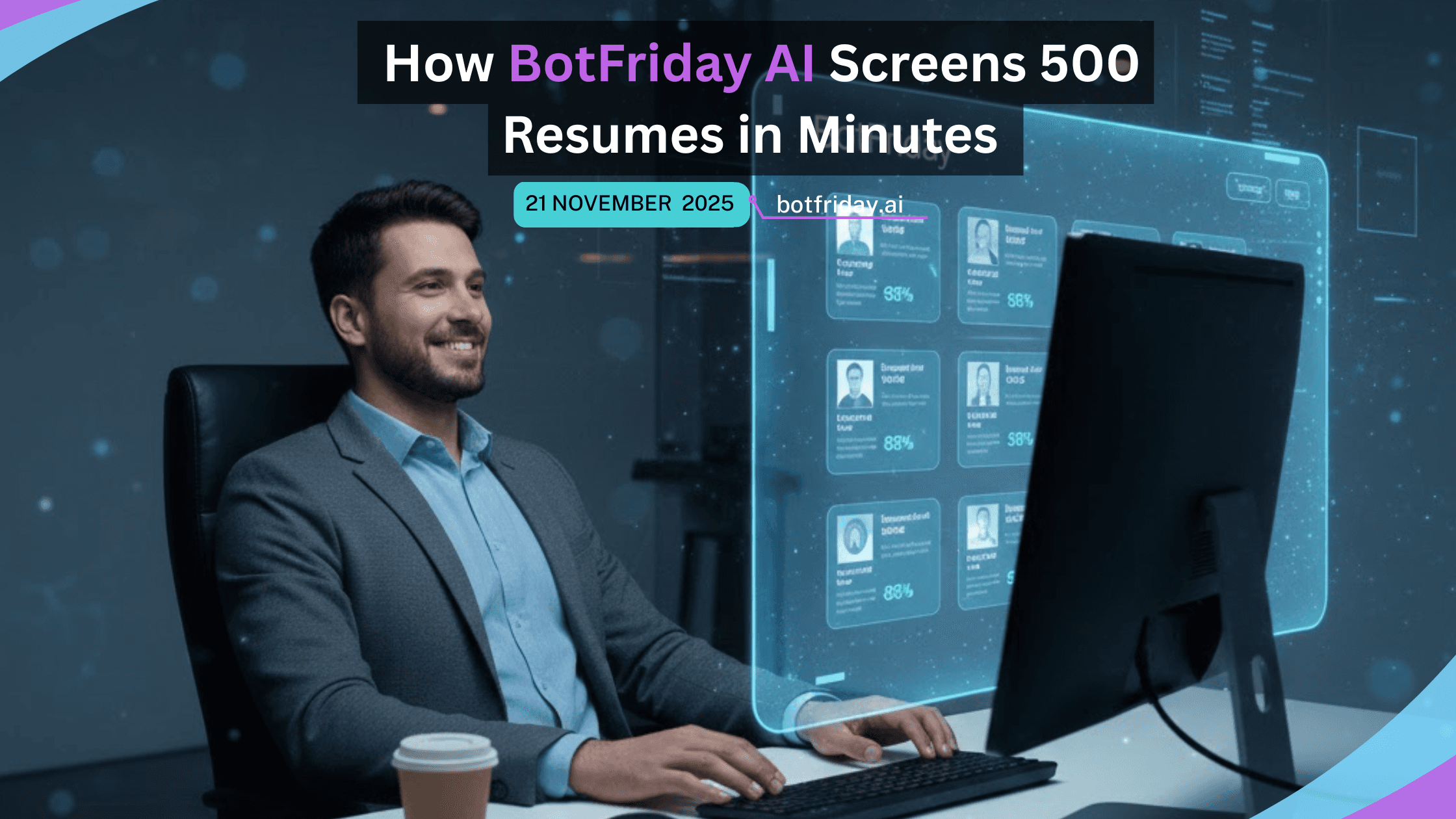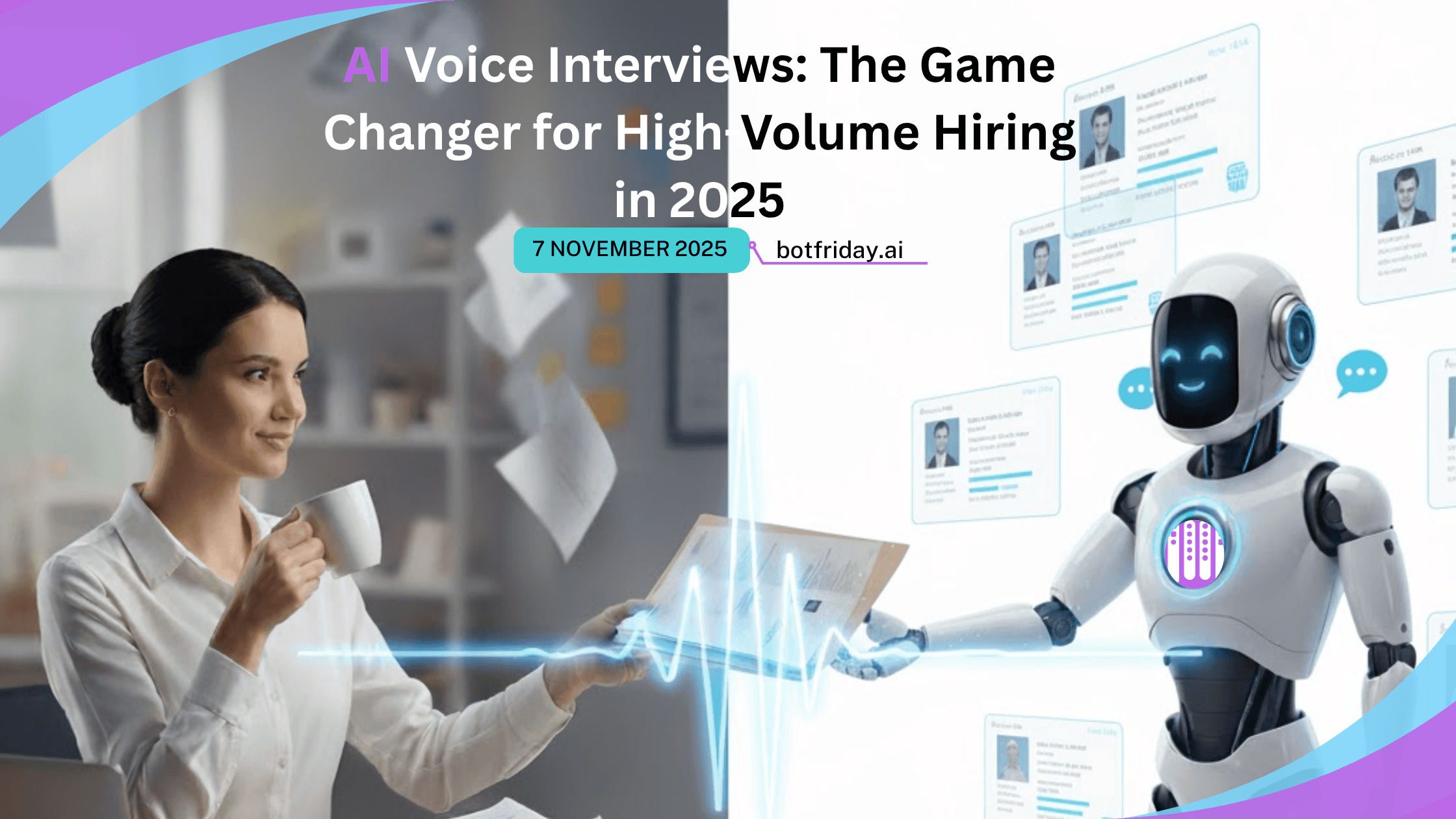How Much Time Do You Waste Screening Resumes? (And How to Fix It)
6
min read
August 22, 2025
Picture this. You've just posted a job opening and received 200 applications by Friday afternoon. Now you're staring at a digital mountain of resumes, knowing that each one needs at least 3-5 minutes of your attention. That's 10-16 hours of pure screening time for one position.
Sound familiar? You're not alone. Most hiring managers spend 40-60% of their time on resume screening, only to realize that 80% of applications don't even meet basic requirements. The math is brutal when you break it down.
This blog will show you exactly how much time you're losing to manual resume screening and provide concrete solutions to cut that time by 70% or more. We'll also calculate the real cost of your current process and explore how automated resume screening can transform your hiring efficiency.
The Hidden Time Drain of Manual Resume Screening
Manual resume screening isn't just time-consuming. It's a productivity black hole that most organizations underestimate. Let's break down the actual numbers.
For every 100 resumes you receive, here's what happens:
Initial Review Phase: 3-5 minutes per resume to scan for basic qualifications. That's 5-8 hours for 100 applications.
Detailed Assessment: Another 5-10 minutes for promising candidates to evaluate experience, skills, and cultural fit. Add 3-5 hours for the 30-40% that pass initial screening.
Note-Taking and Documentation: 2-3 minutes per candidate to record findings and justifications. Another 3+ hours total.
Administrative Tasks: Time spent organizing, categorizing, and updating your applicant tracking system. Roughly 1-2 hours per batch.
The total? 12-18 hours per 100 applications. And that's just for screening, not including follow-up calls, scheduling, or interviews.
Real-World AI Assessment Speed
Agent Lex's assessment of software engineer Vishvam Desai demonstrates the speed difference: 89% overall score with comprehensive evaluation completed in under 2 minutes. The system simultaneously analyzed:
5 weighted criteria with detailed scoring breakdown
Red flags analysis across 4 categories (0 detected)
Dealbreaker assessment for 4 critical requirements (0 failed/4 total)
Technical skills mapping including Java, SpringBoot, React, TypeScript, Node.js, SQL, and ExpressJS
Project analysis covering LiveDocs collaborative editor and AI Interview Scheduler
This level of comprehensive analysis that would take a human recruiter 15-20 minutes was completed in seconds with greater consistency and detail.
The Real Cost Calculator
Here's a simple way to calculate what this costs your organization:
Your hourly rate × Hours spent screening = Direct cost
Plus opportunity cost: What else could you accomplish with those 12-18 hours?
For a hiring manager earning $75,000 annually (roughly $36/hour), screening 100 resumes costs between $432-$648 in direct time. Multiply that across multiple positions and team members, and you're looking at thousands of dollars monthly.
Why Traditional Resume Screening Falls Short
The problem isn't just time. Manual screening creates several cascading issues that affect your entire hiring process.
Inconsistent Evaluation Standards: Different reviewers apply different criteria, leading to qualified candidates being overlooked and unqualified ones advancing.
Reviewer Fatigue: After screening 20-30 resumes, your attention starts declining. Studies show decision quality drops significantly as fatigue sets in.
Keyword Fixation: Human reviewers often focus too heavily on specific keywords rather than understanding overall candidate potential.
Bias Creep: Unconscious bias affects manual screening more than we realize. Names, schools, and employment gaps can influence decisions in ways that don't predict job performance.
Comprehensive Red Flags Analysis
Unlike manual reviews that might miss critical warning signs, AI systems provide systematic red flag analysis:
Career Gaps: Automated detection of employment gaps with contextual analysis
Job Hopping: Pattern recognition for excessive job changes vs. strategic career moves
Skill Gaps: Identification of missing critical competencies
Education Mismatches: Verification of educational requirements alignment
For Vishvam Desai's profile, the system detected 0 red flags across all categories, providing recruiters with confidence in the candidate's stability and qualifications.
According to research from Harvard Business Review, manual screening processes reject qualified candidates 30% of the time due to these systematic issues.
The 60-Minute Solution
What if you could screen 500 resumes in just a few minutes, rather than 3600 minutes/ 60+ hours? That's exactly what modern automated resume screening technology makes possible.
Multi-Criteria Evaluation in Seconds
Real-world example: Vishvam Desai's assessment shows how AI evaluates multiple dimensions simultaneously:
Overall Score: 87% with transparent scoring methodology
Success Indicators: ✓ Success, ✓ No Red Flags, ✓ All Dealbreakers Passed
Detailed Analysis: Full stack software engineer profile with Google and Microsoft experience
Skills Verification: Proficiency confirmed in React, TypeScript, Java, Node.js, SpringBoot, ExpressJS
Project Portfolio: LiveDocs collaborative editor and AI Interview Scheduler with specific technology stacks
This comprehensive evaluation, completed in under 2 minutes, provides more depth than typical 15-20 minute manual reviews.
AI-powered recruitment tools process applications using multiple evaluation criteria simultaneously. Instead of reading each resume line by line, these systems analyze skills, experience, education, and role fit in seconds.
The technology works by:
Pattern Recognition: Identifying successful candidate profiles from your historical hiring data and applying those patterns to new applications.
Skills Assessment: Evaluating technical and soft skills based on context, not just keywords.
Experience Mapping: Understanding how different types of experience translate to role requirements.
Bias Reduction: Applying consistent evaluation criteria across all candidates.
Real Numbers from Automated Screening
Organizations using automated resume screening report significant improvements:
Time reduction: 70-85% less time spent on initial screening
Quality improvement: 40% better candidate-to-interview ratios
Faster hiring: Average time-to-hire reduced by 50%
Cost savings: 60% reduction in recruiting costs per hire
According to SHRM, companies using AI recruitment tools fill positions 3x faster than those relying on manual processes.
How to Calculate Your Current Waste
Use this simple framework to assess your current screening efficiency:
Step 1: Track your time for one week. Note how many hours you spend reviewing resumes versus other recruiting activities.
Step 2: Calculate your cost per hire by dividing total recruiting expenses by number of hires made.
Step 3: Determine your screening-to-interview ratio. How many resumes do you review for each candidate you interview?
Step 4: Assess quality outcomes. What percentage of screened candidates receive job offers?
Most organizations discover they're spending 3-4x more time on screening than necessary, with lower quality outcomes than automated solutions would provide.
Implementing Automated Resume Screening
The transition to automated resume screening doesn't require a complete system overhaul. Modern AI recruitment tools integrate with existing applicant tracking systems and can be operational within days.
Start Small: Begin with high-volume positions where manual screening is most time-intensive.
Set Clear Criteria: Define what constitutes a qualified candidate for each role. The AI system will apply these consistently.
Monitor and Adjust: Review results weekly and refine criteria based on interview outcomes.
Train Your Team: Help hiring managers understand how to interpret AI-generated candidate rankings and insights.
The key is choosing a solution that enhances human judgment rather than replacing it entirely. The best AI hiring software provides detailed explanations for each candidate ranking, allowing you to make informed decisions quickly.
Beyond Time Savings
Automated resume screening delivers benefits beyond pure time savings. The consistency and thoroughness of AI evaluation often uncover qualified candidates that manual screening might miss.
Expanded Talent Pool: AI can identify transferable skills and non-traditional backgrounds that human reviewers might overlook.
Better Documentation: Automated systems provide detailed rationales for each decision, improving compliance and reducing bias claims.
Predictive Insights: Advanced systems can predict candidate success likelihood based on historical performance data.
Scalability: Handle hiring surges without proportionally increasing staff or compromising quality.
Companies using automated resume screening report higher satisfaction from both hiring managers and candidates due to faster, more consistent processes.
Conclusion
Manual resume screening wastes significant time and money while delivering inconsistent results. The average organization could save 60-70% of screening time by implementing automated solutions, translating to thousands of dollars monthly in productivity gains.
The question isn't whether AI will transform recruitment. The question is whether you'll adopt these tools before your competitors gain an insurmountable advantage in attracting top talent.
Start by calculating your current screening costs. Then explore how automated resume screening could transform your hiring efficiency while improving candidate quality.
You can do all this through BotFriday AI.
Frequently Asked Questions
Q: How accurate is automated resume screening compared to human reviewers?
Studies show that well-configured AI screening systems achieve 85-90% accuracy rates, compared to 60-70% for manual screening. The key advantage is consistency across all applications rather than declining accuracy due to reviewer fatigue.
Q: Can automated screening handle creative roles or senior positions that require nuanced evaluation?
Modern AI systems excel at evaluating complex criteria, including leadership experience, creative portfolios, and strategic thinking indicators. They can assess context and transferable skills more comprehensively than keyword-based manual screening.
Q: What happens to candidates who are incorrectly filtered out by automated systems?
Quality automated screening platforms provide appeal processes and detailed rejection reasons. Many organizations see fewer qualified candidates rejected because AI systems don't suffer from unconscious bias or fatigue-related oversights.
Q: How long does it take to implement automated resume screening in an existing recruitment process?
Most modern solutions integrate with existing ATS platforms within 1-2 weeks. The setup involves defining evaluation criteria and testing against successful hires from the past to calibrate accuracy.
Q: Do automated screening tools comply with equal opportunity employment regulations?
Reputable AI screening platforms are designed with compliance in mind and often reduce bias compared to manual processes. They provide audit trails and can be configured to ignore protected characteristics while focusing on job-relevant qualifications.




